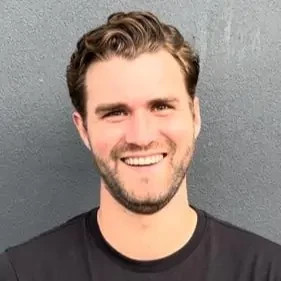Hi I am preparing for McK and often feel my interpretation from exhibits is pretty weak. Is there a way I can work on this and improve it? Thanks
Preparation Plan for Mckinsey


Hey there,
Even though there's some good suggestions already, we don't really know what the problem is. Can you please elaborate so we can give some more targeted support?
Candidates struggle with charts in different ways. This could be with regards to, but not limited by, the following:
- Reading and understanding graphs/charts
- Extracting non-obvious information
- Knowing when to do some quick math and actually doing it
- Contextualizing the information within the case
- Recalling the objective and knowing what to actually look for
- Synthesizing key insights
- Proposing a course of action
- Communicating in a structured manner throughout all above steps
Generally, you need to be able to do all these things well. If you struggle with all of these, more full-case practice may be needed, ideally with a coach. If it's just one particular element you're struggling with, we may be able to propose a more targeted training approach.
Let us know!

Hi there,
Best Practice Strategy/Resources
1) Practice in RocketBlocks
2) Practice in casebooks. LabCo and Enerforce are two of my favorite chart-based cases.
3) Read the Economist (especially the graphic detail)
4) Ask case partners to focus particularly on your chart-reading skills (i.e. by providing you with cases with many charts) - Bain and Deloitte cases tend to be chart heavy
5) Get a coach. For example, I run a number of exhibit/chart interpretation training programs for other academies/learning centers. Feel free to reach out to get the same training!
Steps to interpret charts/graphs effectively
1) Read the title - and understand it
2) Read the legends - and understand them
3) Remind yourself of the objective / hypothesis in the case, to see where this might fit
4) Find the differences - where does the line graph plummet or spike? Which column is a lot smaller or bigger than the others? Where does change occur? The differences are what matter
5) Talk outloud while interpreting - first, it helps you think and process your thoughts, second, it lets the interviewer provide guidance and course correct if needed.
Practice Cases
Additionally, I've created the following chart-heavy cases that should help you practice your chart/exhibit reading further!

This how you should approach exhibit interpretation:
- Read the slide by yourself (take your time, ask questions if you need to understand the slide)
- Consider the case objective when analyzing the slide
- Tell the impact of the slide in terms of the recommendation
- Explain the insights and support with the evidence from the slide.
Candidates usually do three mistakes:
- They just describe what the slide says (e.g. segment X is growing by 10%"). There's no “so what”, no insight".
- They bring up an insight… but it is unrelated to the problem you are trying to solve.
- They just don't know what to say.
In all of these situations the real problem is that they are not being objective or hypothesis driven. You have to analyze the exhibit in the context of the problem you are trying to solve.
So the first question you have to ask yourself is: how does this influence the case recommendation? (e.g. “should we invest in market XYZ”?)? Is this supporting evidence or not? Once you find it, you have an objective or hypothesis driven insight.
Then when you read the slide you say: this does (not) support entering market X, because of insights XYZ, which is based on ABC evidence".

Hi there,
The method I recommend for graph analysis is the following:
1. READ THE GRAPH
- Ask for 30 seconds to understand the graph
- Summarize the graph. Read in particular the graph title, the legend, and the footnote. Candidates quite often skip this part and then make mistakes
2. ANALYZE THE GRAPH AND FIND THE KEY INSIGHTS
- Repeat the question. Many candidates don’t spend time clarifying the question; consequently, they answer the wrong question. Be sure to align with the interviewer on what you have to do
- Provide an analysis related to the question. Identify the key insights of the graph based on the question. This is the most difficult part of graph analysis to master, as it is different in every graph. You can improve with drills on your own or coaching
3. PROPOSE THE NEXT STEPS
- State your hypothesis or suggestion on what to do next. Present what should be done next to help further the client to reach the goal
- Ask a question/propose an analysis related to what is needed to move forward. This will show you are able to drive the case forward
- - - - - - - - - - - - - - - - - - - - - - - - - - - - - - - - - - - - - - - - - - - - - - - - - - - - - - - - - - - - - - - - - - - -
You can find below a few cases with Exhibits to practice:
- NonProfit Case - https://www.preplounge.com/en/management-consulting-cases/interviewer-led-mckinsey-style/advanced/mbb-final-round-case-smart-education-198
- Consumer Goods Case - https://www.preplounge.com/en/management-consulting-cases/candidate-led-usual-style/beginner/bain-1st-round-case-blissottica-235
In case you need help, I do a specific session on graph analysis, please feel free to PM me for details.
Best,
Francesco

Dear candidate,
for this, if I were you, I would do drills focusing on this skill. It is great that you have found something to improve. This way you can improve your skills in a targeted way. Specifically take a case book, or use the cases on PrepLounge that leverage charts, simply read only the prompt, structure the answer (so you know the context). Then flip through the charts, practise summarizing each chart and deducing so whats (key conclusions), after you have done this for 50-100 charts (some cases may have multiple charts, so that is about 20-40 cases), you should be much fitter.
Best regards,

you should work on your so what? Which means anytime you see a number, graph, ask yourself what are the insights I get from that can help me with the overall objective of the question? also practice with experienced and skilled people who can give you tight feedbacks. Quality of your practice matter more than quantity of it.
















